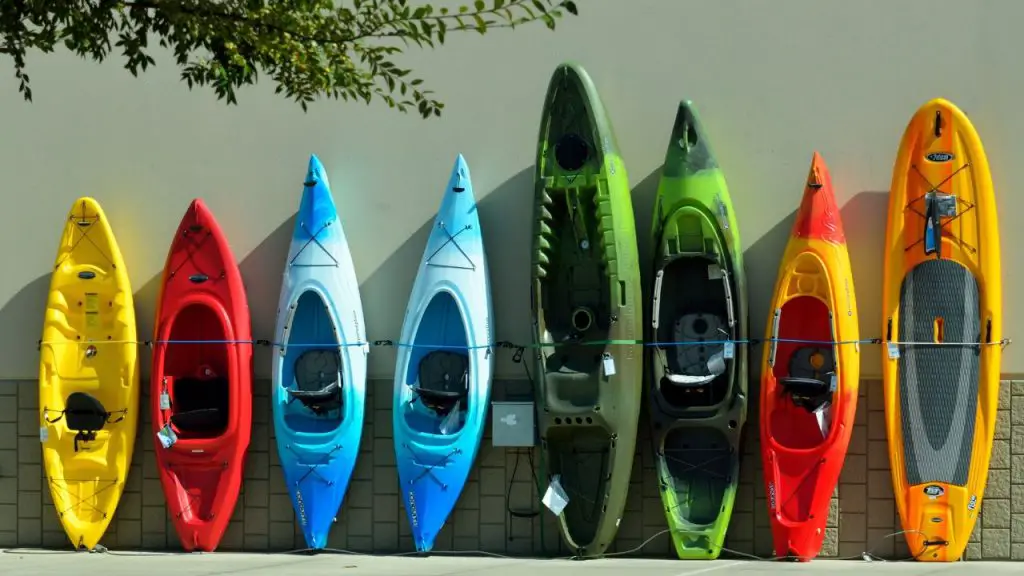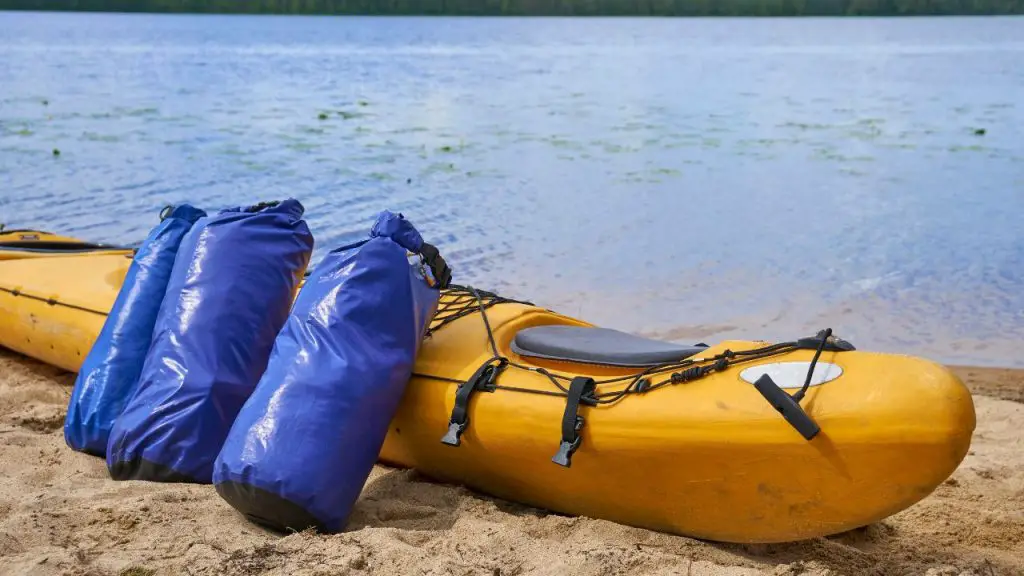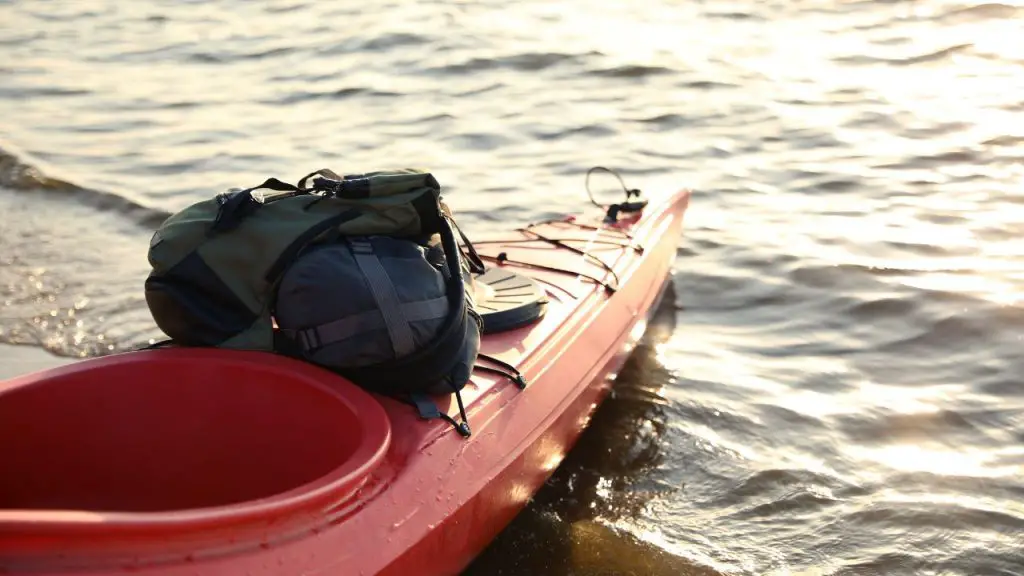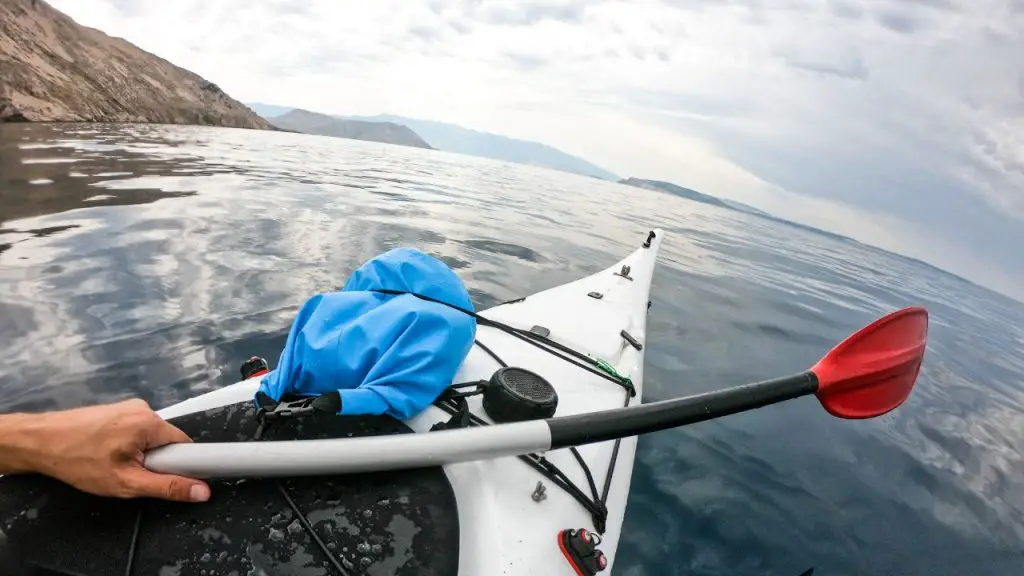Do you want to carry more items on your kayak but are afraid of exceeding the weight capacity? No problem. You can safely increase the weight capacity of your kayak using simple and cost-effective methods.
Consider changing the paddling location, using lighter gears and equipment, or increasing buoyancy using airbags. Alternatively, you can buy a new, larger kayak.
Read on to find out how to increase weight capacity of kayak in detail!
Table of Contents
What Weight Can a Kayak Hold?

The weight limit is the kayak’s load carrying capacity. The number is given by the manufacturer to help paddlers know what they can carry on board during their adventures without sinking the kayak.
The weight limit or what a kayak can carry depends on the type of kayak. Small recreational, ocean, or touring kayaks usually have a capacity of about 200-450 pounds.
Fishing kayaks are designed to carry heavier gear and therefore have a capacity of 550 pounds.
The heaviest kayaks are the tandems. These have varying weight limits that range from 450 to 700 pounds.
You should know the weight capacity of your kayak before thinking of ways of increasing that number. It will give you an idea of how much extra weight carrying capacity you can get from your kayak.
How to Increase Weight Capacity of Kayak

Many ways of increasing the weight capacity of your kayak exist. They range from improving your paddling technique to redesigning your kayak and using lighter gears.
These may help if you don’t have the budget to buy or rent a new, larger kayak for the purpose.
However, these methods do not add much carrying capacity, It focuses on improving your kayak’s buoyancy. You can only exceed the limit by a few pounds.
Otherwise, it can sink with you and everything else on board. Let’s examine these approaches in detail.
Change Where You Paddle
Where you paddle your kayak determines how much weight you can have on board. If you are used to kayaking in calm waters in the coastal regions, you should never try rough waters.
Going to rough waters with the same weight on your kayak increases the chances of sinking.
Huge wages will splash into the kayak, and water accumulates over time. The situation gets worse when you are loaded. You can increase the weight carrying capacity if you stick to calm waters.
Also, the nature of water determines the weight carrying capacity. Salty ocean water is more buoyant than a fresh lake or river waters. Avoid going to fresh water if you usually paddle in ocean water with a load on your kayak.
Alternatively, you can increase the weight limit of your kayak if you move to salty water, unlike fresh water.
Change Your Kayak Design

You can make your kayak carry more loads by redesigning it. That doesn’t involve taking it apart but just improving its hull design.
You can change the kayak’s hull design in many ways. Airbags are commonly added accessories. These characteristically make the kayak float higher above the water. Add one or more airbags to the bulkhead compartment to increase weight carrying capacity.
However, only attach them to your boat if you have more load. Paddling with your kayak floating high up on the water reduces its stability.
You can buy airbags or other accessories of your choice that will help you change the hull design of your kayak for the better. You can also use a kayak stabilizer system or pool noodles for floatation.
The following are some of the products you can consider:
- Harmony Vinyl Rodeo Kayak Floatation Bag with Stern
- Harmony
- Scotty Kayak Stabilizer System
- Lixada 2Pcs Kayak PVC Inflatable Outrigger Kayak
Lixada Kayak PVC Inflatable Outrigger Kayak
Get Lighter New Equipment
More reliable and lighter gears are available on the market. If you want to carry more load on your kayak, it may be time to upgrade the heavy equipment you have been using.
By reducing the weight on board, you can get more items in. Invest in lightweight gear and equipment. But if that doesn’t help, buying a larger kayak that can carry more is the next solution.
Buying a New Kayak With a Higher Weight Capacity
Kayaks have different weight-carrying capacities. That means you should consider the designated weight limit as the primary factor when buying one.
Some are designed for heavy people and carry much heavier gear like those used in fishing. You cannot compare them to recreational kayaks that are much lighter.
If all the kayak load carrying capacity discussed does not help, buy a kayak with a larger capacity. It is the most effective way because these kayaks maintain stability and reliability under load.
They cannot sink or capsize because you added more weight or changed where you paddle.

Consider the following kayaks if you are after a high weight carrying capacity that makes kayaking for large paddlers safer in any water:
- Vibe Sea Ghost 130
- Wilderness Systems A.T.A.K. 140
- Jackson Big Rig HD
- NuCanoe Unlimited
- Sea Eagle 380X Explorer
Vibe Kayaks Sea Ghost 130
How to Determine Ideal Weight Capacity of Kayaks
All kayaks have load limits. However, it is not advisable to use up to the designated value. The golden rule is not to exceed 70% of the rated weight capacity.
If the manufacturer’s specification is 500 pounds, you can calculate the ideal weight capacity by multiplying this value by 70%. You should only load 350 pounds of gear and equipment onto the kayak for safe paddling.
What Happens If I Go Over the Weight Limit On a Kayak?
Your kayak can still be safe to paddle in any water if you load it up to its weight limit. But if you go beyond that, it will sit dangerously below the water surface.
The risks of it sinking become high. It can sink when you change paddling location from salt to fresh water or when padding on rough waters.
Overloading your kayak can also void your insurance. That will see you run into losses if any it capsizes or sinks. Simply keep your kayak load to 70% of its indicated weight limit to be safe and avoid all the risks.

Tips to Deal If Your Kayak Is Overloaded
Paddling an overloaded kayak is very challenging to even experience paddlers. The best step is to avoid being in that situation. But if you, unfortunately, find yourself in it, use the following tips to get out of it:
- Keep calm and maintain the appropriate posture.
- Paddle your kayak using an appropriate technique and keep high focus.
- Apply buoyancy improvement methods to keep your kayak afloat.
FAQs
Can you go over the weight limit on a kayak?
No. The kayak’s performance deteriorates further with every pound over the weight limit. The maneuverability and ability to stay afloat are all affected. Overloading your kayak is riskier and should be avoided as much as possible.
How do you increase buoyancy in a kayak?
You can increase your kayak’s buoyancy by using flotation bags, beach balls, and pool noodles. They can make a kayak float high above the water surface. Therefore, you can add more load without the kayak sinking.
Can you add foam to a kayak?
Yes, but it depends on the foam type. Closed-cell foams are waterproof. Therefore, they can be added to a kayak to increase buoyancy. However, spray foam is unsuitable because it can get soaked with water.
Are you supposed to leave the Styrofoam in your kayak?
Yes. Styrofoam maintains the kayak’s buoyancy on water and keeps you from getting pinned if anything happens to your kayak. Leave it in your kayak for your safety.
How do I keep my kayak from sinking?
Your kayak will sink if overloaded. Change its hull design by making it more buoyant to keep it afloat. Consider adding flotation boards, beach balls, and other stabilization systems.
Also, focus on your posture and paddling technique if your kayak is sitting dangerously low in the water.
Final Sentences
Your kayak’s weight capacity lets you know how much you can have on board without making it unstable and unsafe.
But if you want to carry more, you may consider changing location, buying lighter gear and equipment, and changing its hull design. If nothing works, invest in larger kayaks designed for more weight.
We hope that you found this article informative. We appreciate your time at Windpaddle and invite you to explore the website for related content. Also, kindly share this article with your fellow paddlers.



